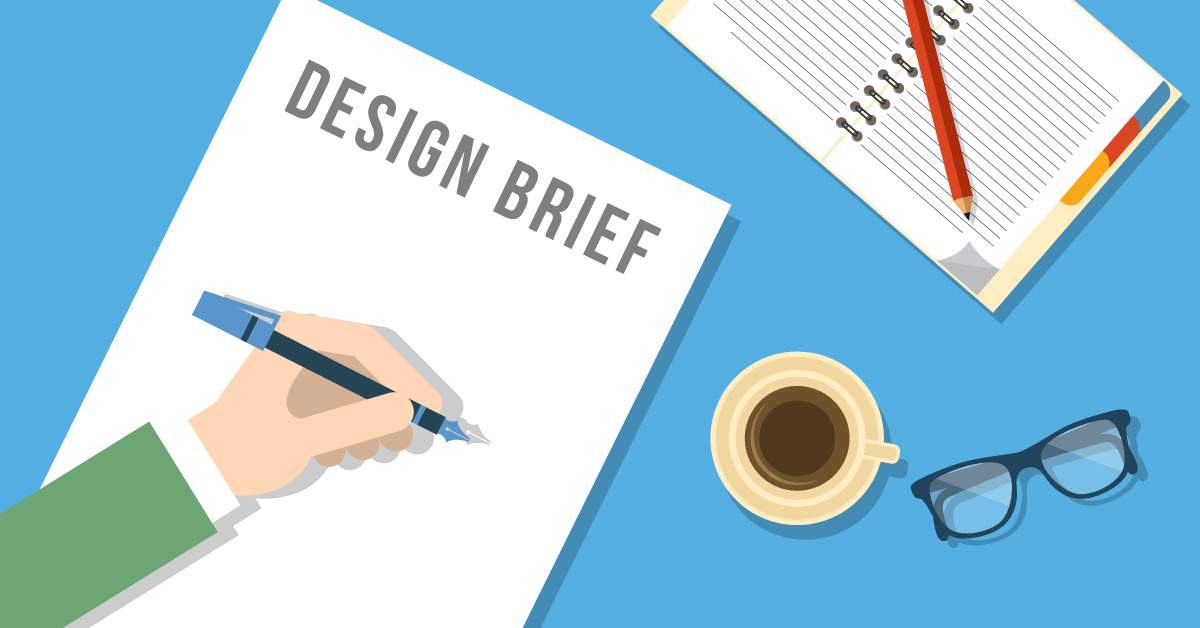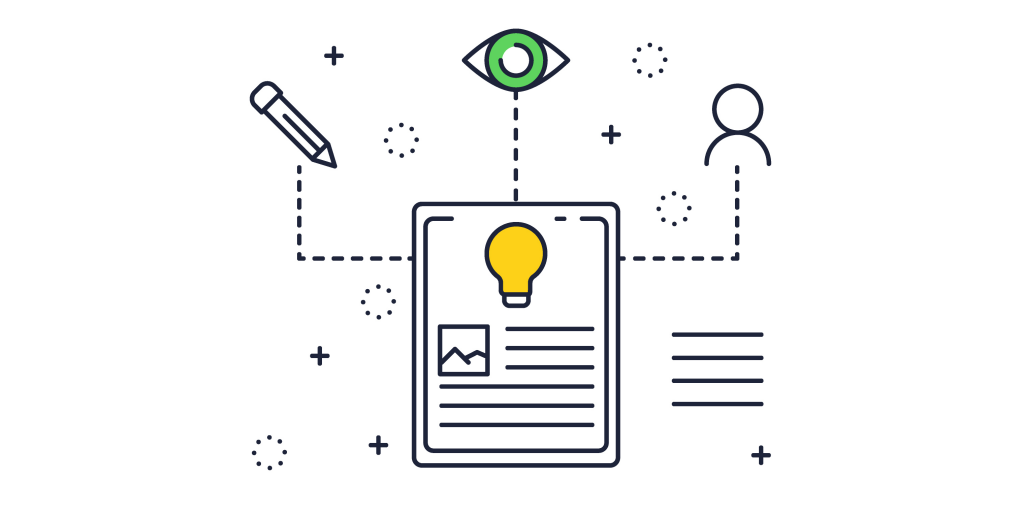Template for a Design Brief – A design brief is a written document that describes the purpose of the project and includes details about the client. The design brief is the project’s blueprint.
This template is a formatted design brief for the AIGA Proposal and Contract Guidelines.
As designers, we often come up with ideas for projects we want to start, but we need some direction before we get started.
Design briefs are a great way to provide direction to your clients, help them focus on the project’s purpose, and give them a roadmap for getting from Point A to Point B.
The brief serves as a roadmap, providing an overview of the project, and outlining what needs to be done, who will be involved, and the project scope.
Design briefs help you stay organized, keep your client on track, and provide a structure to help you complete the project.
This template is the first step in creating a design brief that will help your client achieve their goals and provide a structure for you to work within.
If you’re interested in learning more about design briefs, check out this article.

What Is A Design Brief?
A template for a Design Brief is the first thing you’ll need to develop if you want to work as a graphic designer. This document outlines the exact nature of the job, including how you’re expected to work and the amount of time it should take you.
A design brief is a document that describes the look and feel of a product or service. It’s often used to communicate a project’s desired user experience and visual language.
The template for a Design Brief is fundamental because it sets the scene for your project. It’s what you need to work out how to communicate your vision to your client and your team. The design brief is the blueprint of the final product. It helps you stay organized, focused, and deliver on the promises you made to your client.
A brief can be a bit of a daunting task for many designers. This is especially true when you are trying to write one for the first time. But with a little guidance and preparation, it’s not impossible to create a great design brief. Your brief will include everything from your project name and logo, to your brand identity, to your target market and demographic.
Create A Design Brief
Design briefs are written documents that describe a product, service, or brand. They’re essentially a roadmap for designers and developers. They outline what you want, why you want it, and what you hope to achieve.
They’re essential because they help you focus your efforts and avoid wasting time, money and energy on projects that won’t go anywhere.
In short, they’re a must for anyone who wants to build a successful product.
But What Does A Design Brief Look Like?
A design brief is a well-written document that contains the following:
A description of the problem you are trying to solve
The reasons for your decision
The objectives and key results that you are hoping to achieve
The criteria you will be judging your designs against
An explanation of your brand and what makes it unique
A summary of what you want your users to do with your product
The main user personas (who you are trying to reach)
This may seem like a lot of work, but it’s really not. If you break it down into simple steps, you will see how easy it is to complete. You’ll also find that you’ll spend less time creating the product and more time focusing on marketing it.
This is where brainstorming comes in handy. First, sit down and write down everything you can think of related to your project. Use a sticky note or piece of paper to collect all of the ideas you can think of.
Next, take out a pen and write down all the words and phrases that relate to your project.
Then you need to figure out who your audience is and where they are in the buying cycle. Finally, think about how you can position your product to attract those customers.

Different Types Of Design Briefs
There are many different types of briefs, including user personas, personas, user journeys, and wireframes. Whatever form it takes, a design brief helps your team understand the project’s goal. The first step to building a successful design business is understanding the different types of briefs you might receive. The kind of brief you are given will depend on the kind of project you are working on and your experience level.
As you can see, the types of briefs differ depending on the kind of project. In the case of brand design, the brief will describe what the brand stands for. It should also contain a logo and possibly other symbols associated with the brand.
The same goes for product design briefs. They are used to describe the product and its features. A brief for product design should include the name of the product and information about its shape, size, color, material, and any other relevant details.
Finally, a web design brief should contain everything related to the site. This includes the navigation, a list of pages, a brief description of each page, and other important information.
Design Brief Examples
Design briefs are a great way to learn about the type of client you’re targeting.
While it’s easy to write a brief for a specific type of audience, design briefs are usually more general.
First, it’s important to understand the target audience before writing a design brief. The main reason is that the process of creating a design brief allows you to test out ideas in a safe environment. You’ll be able to see what works and what doesn’t without going live.
And while it may seem intimidating to start with a blank page, remember that there are many ways to break down a project into small, manageable steps. This makes it easier to plan and organize your ideas.
One of the most important things to remember when it comes to starting a new business is that you need to have a clear vision of what you’re trying to accomplish. If you can’t clearly communicate what you want to achieve, you’ll have a hard time selling your ideas to investors, partners, or clients.
The best way to start is to create a design brief. This is a step-by-step list of things that you need to accomplish to create a product or service that is profitable and desired by your audience.
As you might imagine, it can be not easy to come up with a design brief without first having a clear idea of what you want to create. To help you with this, I’ve made a few examples for walking you through the process.

Frequently Ask Questions (FAQs)
Q: What does it mean when you say you’re a “template” designer?
A: I like to call myself a template because I design templates that can be used as a model to create something else. So, for example, I made the template for the fashion show poster below by first designing the typeface, then cutting it out, and then using the design as a guide for my clients to create their unique posters.
Q: Where does your creativity come from?
A: My creativity comes from the things that inspire me. I am inspired by people, nature, music, movies, etc. I am always looking for new ideas and inspiration.
Q: How did you get started designing?
A: When I was in high school, I wanted to be an architect. However, I had no idea what I would do after high school, so I thought I’d try working in advertising. I worked for a few years and got a taste for design. I started learning how to create Photoshop and illustrator files and went to design school to learn more. After I graduated, I decided to start my own business and have never looked back.
Q: How does your experience with advertising help you in design?
A: It helps me understand how people think and behave the way they do. That knowledge has helped me become a more effective creative director.
Q: What are your favorite design tools?
A: My favorite tool is Photoshop because it allows me to manipulate everything on a computer, and it allows for editing and resizing images. I use Illustrator as well because it’s a good vector editor. I also love using a pencil and paper to draw out rough designs, but ultimately, it comes down to Photoshop.
Myths About Design Brief
- The design brief is a written document that describes what the client needs. It includes information about the project, the client, the company, and the budget.
- The design brief template is a document that can help you create the perfect design brief. It includes everything you need to know about the client and the project.
- As you can see, there is no one right way to do design briefs. They can be helpful, but a few myths are widely believed.
- Design briefs are critical when you’re just starting and can help you figure out your goals. They can also help you improve your work and save you tons of time later on.
- Design briefs are meant to be done before a project starts, so you know what you will do. This helps you save time and avoid wasting resources.
- It’s essential to get to know your client before beginning a project. But it’s also important to know that you won’t always be able to meet your client’s expectations.
Conclusion
The template I’ve created for this post is an excellent example of what I mean by having a design brief. It contains a clear introduction and conclusion and plenty of examples to show you what you can expect.
A brief is a set of questions that helps you structure your ideas and get to the core of what you want to achieve. The key to having a successful design brief is to keep it short.
It’s excellent for both your ideas and those of your client and will help you create a more potent product.
